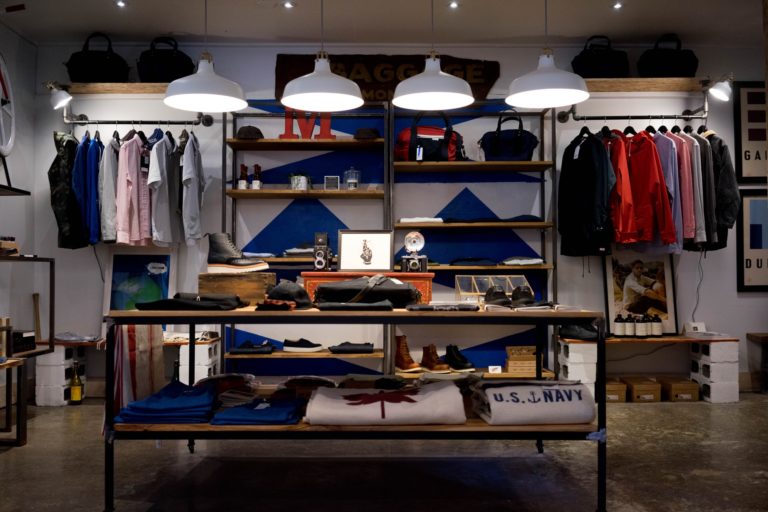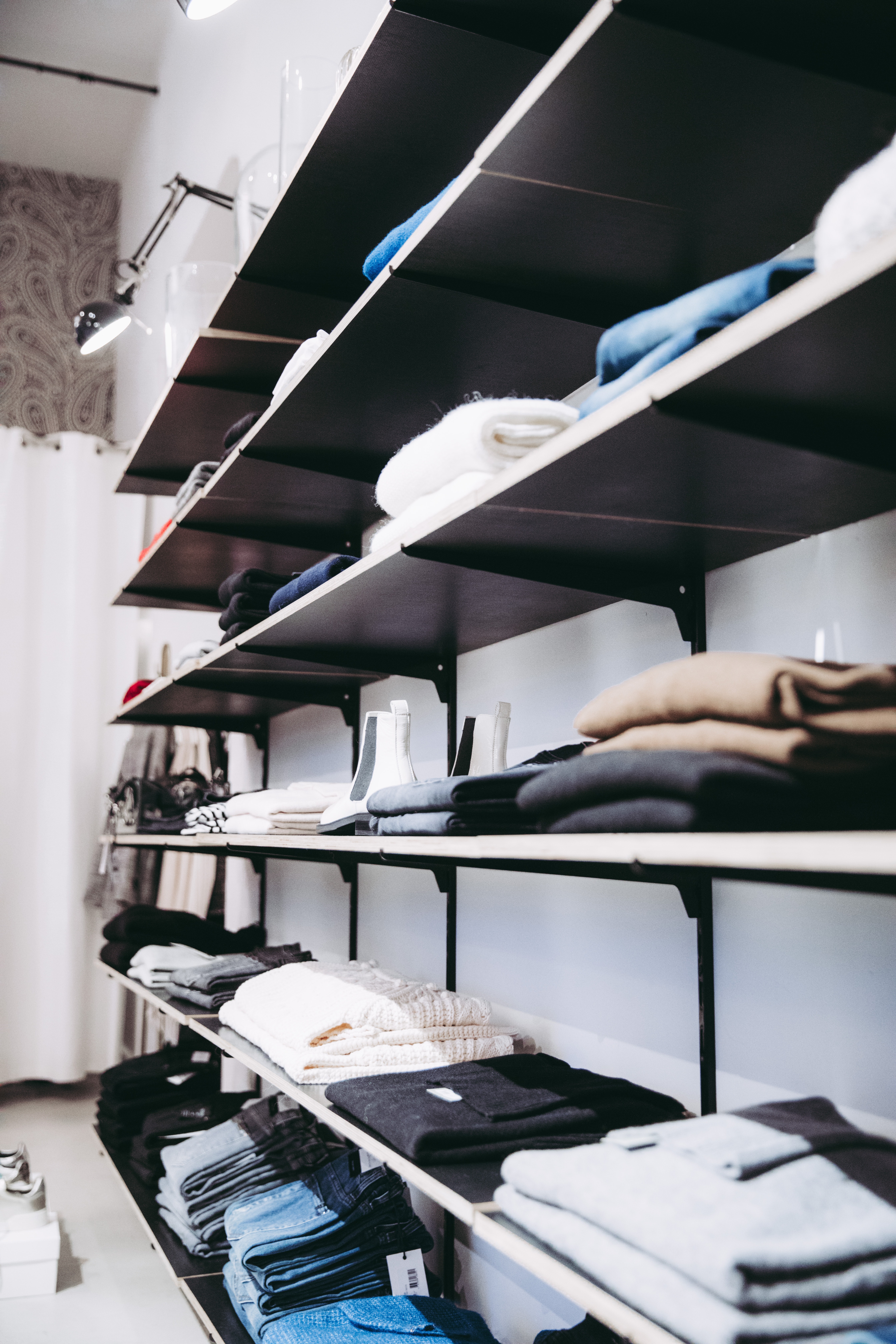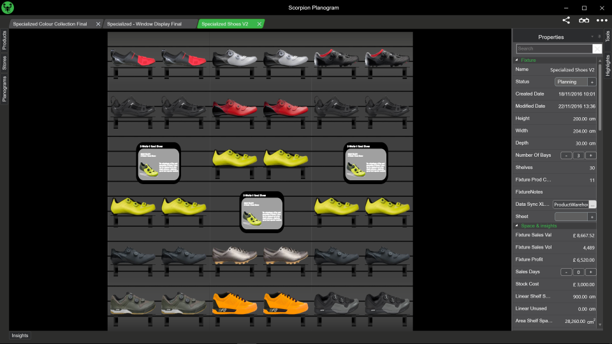How to create a great shoppers experience

Retailers find themselves in a highly competitive world in which they must utilise all tools available to increase their sales. Most tools come at a great economic cost such as advertisements, flyers and promotions. Unlike these tools, merchandising come at a low cost for retailers and is shown to be highly effective. Recent research shows that between 46% and 77% of all store purchases are unplanned purchases decided upon when the consumers are in store. Therefore, visual merchandising is essential to increase in-store product sales. Since the first publication was launched in the late 19th century, teaching retailers the art of window displays, the visual merchandising techniques and tools have been developing rapidly. Here, the basics of visual merchandising and what techniques and tools are available to retailers will be explained.
Visual merchandising might sound straightforward; create a store and shelves, attractive to customers and increase your sales. However, visual merchandising is a subtle art that requires understanding of the customer, their shopping behaviour and the brand reputation that the store is selling. Various techniques and tools are available for visual merchandising, but not all are relevant for every store. Let’s look at the main tools and techniques that visual merchandisers use to improve the shoppers’ experience and stimulate instore purchases.
What is Visual Merchandising?
Store Layout and Merchandize Exposure
Costumers cannot make impulse purchases instore, if they cannot see the products. Therefore, the more products costumers can see, the more purchases they will make. By making smart use of the retail floor space available, the store layout can ‘force’ shoppers to pass a large part of the aisles in the store and increase the exposure to products. Other techniques are positioning products that consumers ‘need’, in corners or at the back of the store, extending the journey that shoppers make in the store and thus increasing product exposure. In contrast, products that customers ‘want’ should be at the be front of the store to lure people in the store, this is also called the Magpie effect.
Besides exposing customers to as many products as possible, the store layout should also provide the shopper with a pleasant and exciting shopper’s journey through the store. Product grouping is important here; depending on the product type, product grouping can be per brand or product category for example.
Signage & Storytelling
Signage is an essential visual merchandising tool to ensure the customer has a pleasant in-store experience and can find all the products that they want and need! Poorly executed signage can lead to frustration among shoppers and can subsequently lead to a quick exit of the store.
From the moment shoppers enter a store, they scan the store and use visual stimuli to lead them through the store. Therefore, from the entrance throughout the store, the signs should provide clear guidelines how to navigate through the store. The signs’ meaning should be understood by the shoppers within 5 seconds; this is called the 5-second rule.
Signage can also help telling a story within a store. Telling a story in store, using visual merchandising techniques, makes it easier for the shopper to connect with the products. One important tool for storytelling is signage. The story can be told throughout the whole store as a theme, such as ‘Spring Break’ or ‘Back to School’, or can be specific to one display.

Product placement
The importance of how to place products on shelves is often underestimated and requires product and shopper background knowledge, and merchandising knowledge. An abundance of research has been conducted to investigate the effects of product placements on shopper’s purchasing behaviour.
There are several classic visual merchandiser product placements principles, also called merchandising principles. First, products are considered to be showcased at an eye-level for the targeted audience (e.g. children have a lower eye-level than adults) and should be in reach. Another classic principle is the ‘Rule of Three’ where products draw more attention to the customer if merchandised in an odd number, as imbalance attracts attention. The Pyramid Principle is a product placement method with one clear focal point (often a product) at a higher level whilst other products are placed beneath it.
Product adjacency and product flow is also important as some products can stimulate the purchase of other products. Product adjacency is also called cross-merchandizing. For example, a store might want to place merchandise kit next to core products, for example placing makeup remover next to make up. Also, unrelated products can be placed adjacent to products that sell well to boost the sales of the other products by a higher visibility due to higher traffic.
When deciding on the product flow, products can be merchandised from economy to premium, placing brand leaders at eye level or at lower levels instead as shoppers will search for them anyway. These guidelines should be well documented and followed in every store to create consistency between all stores.
Analyse sales and change displays
Visual merchandising is never finished nor perfect, it is a constant process of adjustments, renewal and reviews. Visual merchandising is subject to the latest fashion, products and a changing customers for example. Therefore, it is essential to update stores and shelves on a regular basis to keep meeting the customer’s demand.
In order to analyse sales, most retailers use planogram and retail floor planning software. Planogram software, such as Scorpion Space Planning, enables the user to link sales to shelve space and product size. Also, the effects of different visual merchandising styles can be tested by using planogram software and looking at the effects of different merchandising strategies on the product sales.

Fixtures
Not only products and their placement influence sales, also the fixture itself has an effect on the overall decision of a customer to make a purchase. Rounded fixtures at the end of aisles attract customers, this is where customers expect to find promoted products, and this provides clues of what they can find in the aisle behind.
Also, the material of fixtures matters to the customer’s perception of the products merchandised on the fixture. Wooden shelving, for example, can give the impression of ‘authentic, sustainable, expensive’ but this can also give the customer the expectation to find products here with a higher price. So more expensive and visually pleasing shelving and fixtures do not always fit with the sales strategy of the products on the shelf, and should be chosen wisely.
Merchandising with the 5 Senses in mind
The 5 senses for visual merchandising are an important tool that visual merchandisers have. By limiting visual merchandising to the visual aspect, the stores can miss out greatly. Sensory branding is the term for giving the customer a multisensory shopping experience by using a mix of sight, smell, touch, sound and taste.
Sight is the most obvious sense when thinking about visual merchandising, it even says it in the name. Colors, symmetry (Rule of Three), light and contrast are only a few of the many aspects to work with. However, a chaos or a visual assault on the senses should always be avoided, sometime less is more! The smell and sound that a store has, gives subtle hints to the shopper what to expect in this shop and what the targeted audience is. Smell relates to memory and emotion and can trigger feelings, and is therefore a strong tool to work with in stores. With music or sound it is easy to clearly target an audience or store atmosphere. Depending on the type of products, stores can also work with touch and taste senses.
Benefits of Visual Merchandising
Why do retailers invest in having visual merchandisers? Because good visual merchandising greatly increases sales and, therefore, the store’s success relies for a significant part on visual merchandising! Good visual merchandising can increase the number of customers that enter the store, as they are drawn in by the window displays and overall look or feel of the store. An increase in customers comes with an increase in sales, especially in combination with well planned fixtures that are visually appealing and have a intuitive product flow. A thought-through positioning of products can increase the sales of products as well. When time and effort is taken to design the retail floor space, the potential of the retail space is maximised, by using all the space available and placing fixtures and products in such a way that customers are exposed to a maximum number of products whilst having a positive shopping experience.
Every retailer can experience the benefits of good visual merchandising. With the right tools and approach, any retailer can have visually appealing stores that attract people and stimulates them to purchase products. Please contact us for more information on merchandising techniques, software and courses.
